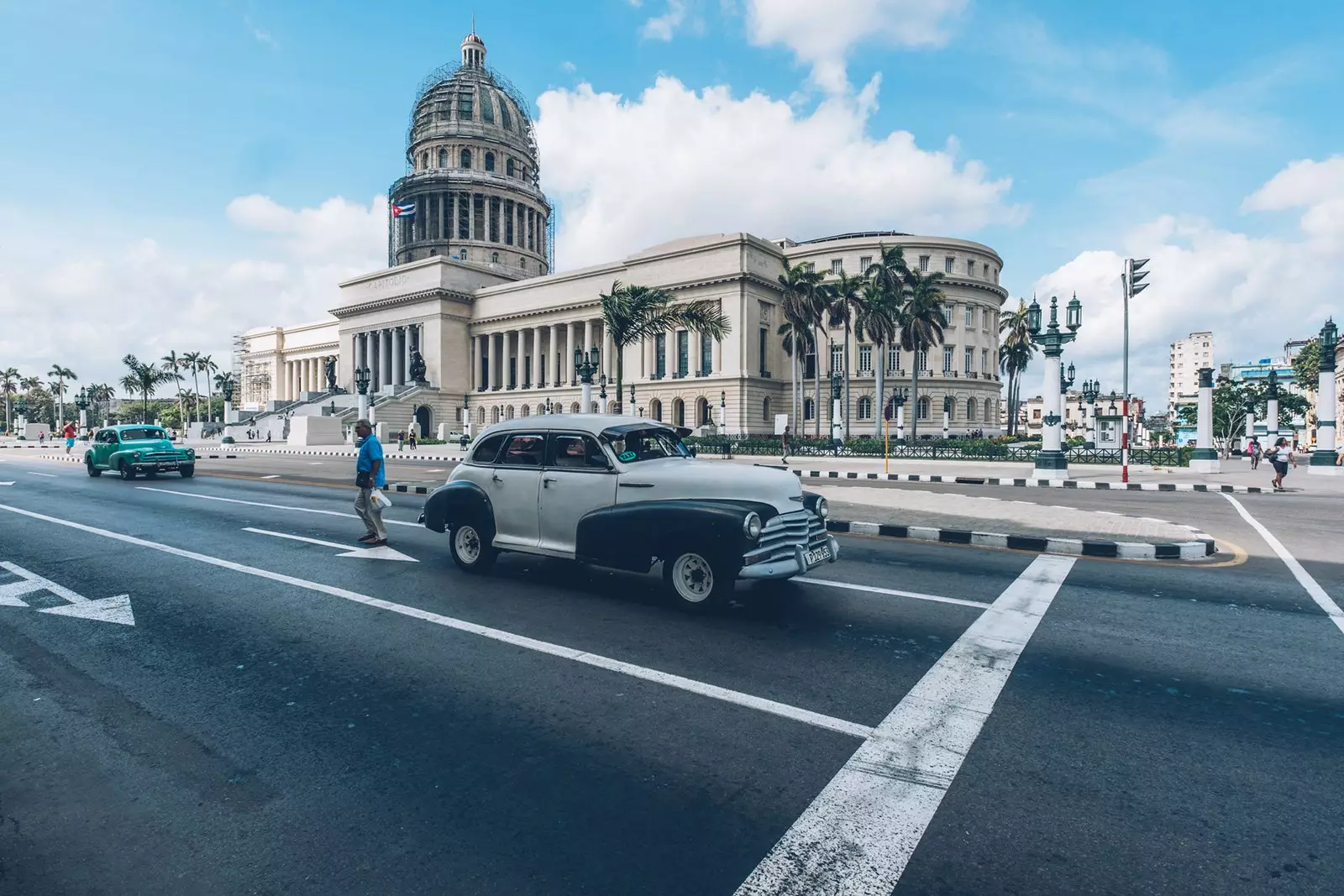
The first time in Havana
"Would you mind smiling a little less?" This is what the immigration officer who checks my passport at the José Martí airport says, holding back a smile, upon landing in ** Havana . It is easy that, who goes to ** Cuba for the first time , a smile escapes him as soon as he arrives, because that country is never a second option.
You come to Cuba eagerly; neither by chance nor by discard. Whoever travels there is because they really want to. This Caribbean country is controversial and tremendously fascinating. It might seem that, by sharing language and history, we will understand what we see and hear.
We won't; nor do its own inhabitants do. Once that logical attempt of wanting to understand the place to which it arrives has been overcome, we will relax and the real journey will begin.
Alejo Carpentier, one of the great Cuban voices , wrote: “Although Havana has an unmistakable physiognomy, color, and atmosphere, it sometimes offers us, turning a corner, leaning out of a side street, disconcerting evocations of remote towns. Cádiz, Almería, Ondarroa, Bayonne, Morlais, Perpignan, Nice, Valencia…they have amazing embassies in our city, not to mention the cities that, like Paris, New York or Madrid, have them in every city in the world”.
He wrote it in his book Conferences , which, by the way, is an excellent travel guide to read before, during and after the trip. Let's not get distracted. Carpentier is absolutely right: many well-known places resonate in Havana; however, he has a unique charisma, silhouette and light. Within half an hour of arriving this is already clear. We will spend the rest of the trip confirming it.
You can go to Cuba for a day or a month; does not matter. It is inexhaustible. A walk down any street in Central Havana can last six hours if we stop with all the people who will strike up a conversation, if we look in all the portals where music will appear.
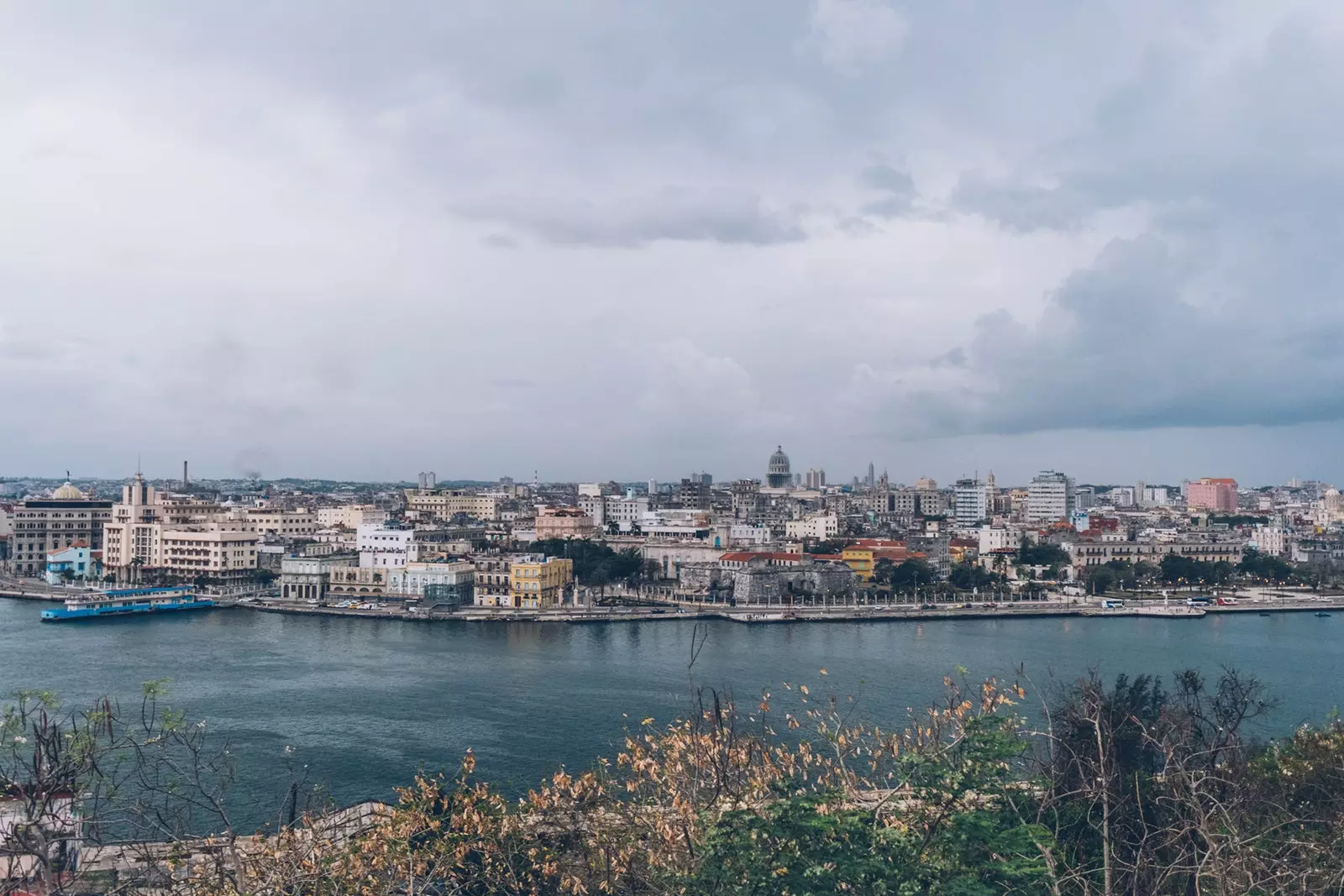
Cuba is inexhaustible
On the first trip to Havana we soon discovered that Getting to know the city involves talking to its people and listening to its music, which invades everything. This will be the background landscape of the trip.
The details are those that are presumed to a powerful city like this one: museums, unique neighbourhoods, places to eat and drink, emblematic architecture...
On the 16th of this month of November, Havana turns 500 years old. All of them, one after another, are present in it. Here, the weight of the past in the present is tremendous; especially the recent one.
The souvenirs in the shops are photos of Ché and Fidel Castro , propaganda sneaks into every corner and official letters continue to be dated with the day, month and year of the Revolution. This makes the country an anomaly. We travel to be agitated and Cuba does it.
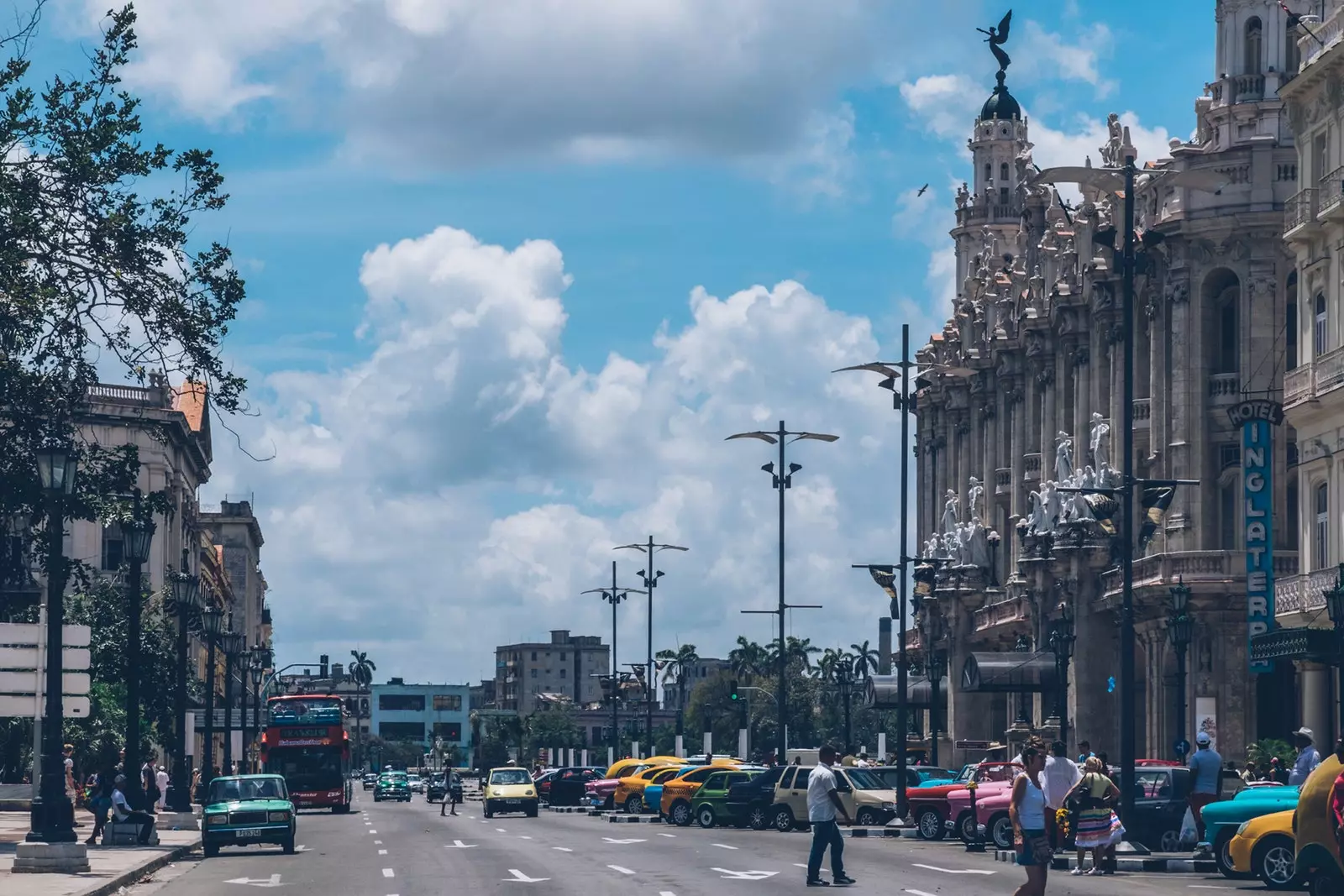
On the 16th of this month of November, Havana turns 500 years old
The first trip to Havana includes a walk through Old Havana. This neighborhood has been restored since 1993, when the Cuban State issued a decree declaring it a priority conservation area.
The result is a monumental complex that brings together baroque, art-deco and neoclassicism and where we see buildings like the one in the ballet school , the old bookstore modern poetry , cultural spaces such as the Carpentier Foundation (always present), palates like Dona Euthymia , churches like the Holy Spirit , the oldest in Cuba, convents such as the one in Saint Clare or curious places like the Sarria Pharmacy.
The famous calle del Obispo concentrates all the tourism. We will go through it quickly and we will stop in the surroundings, always more interesting. There is ** El Café , on Calle Amargura**, where they serve a delicious ditto in a space that, like everything in Havana, is pure photogenic . In Old Havana, remains of its literary past and present survive, such as the groped but graceful, Middle Winery . Hemingway's shadow is long and to go up to his room from Hotel Both Worlds there is queue
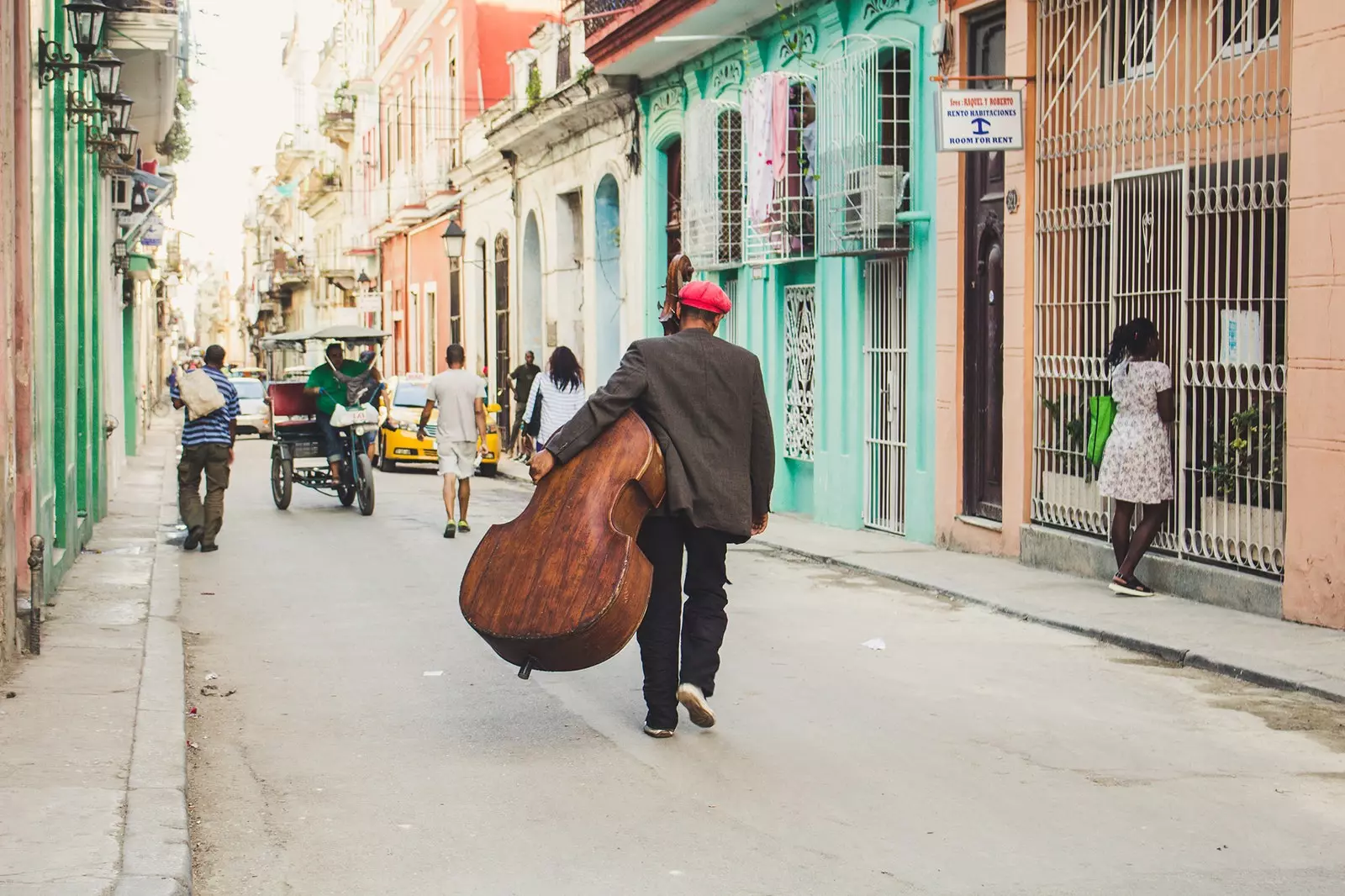
A walk through Old Havana
Carpentier mentions in his _Conference_s a phrase of Andrew Demaison which stated that “Havana is the city in the world where you drink the best” . Gastronomically it is correct, but the cocktail culture is sublime. Eating is expensive, drinking well is not. There is no bad daiquiri. In the constant bar , in front of the Floridita, named after the "inventor" of the daiquiri, they do it with Hemingway's recipe, who was diabetic and changed the sugar for grapefruit. Nor is there a boring afternoon at the Floridita.
The National museum of fine arts worth a visit. This month, on the occasion of the Fifth Centenary, a Goya's 1815 self-portrait belonging to the Prado Museum . Another unavoidable museum is the Museum of the Revolution . Beyond the expected memorabilia (Ché's beret, Camilo Cienfuegos's hat, the doll with which they passed information) he revels in a story that is still present. We travel to be amazed.
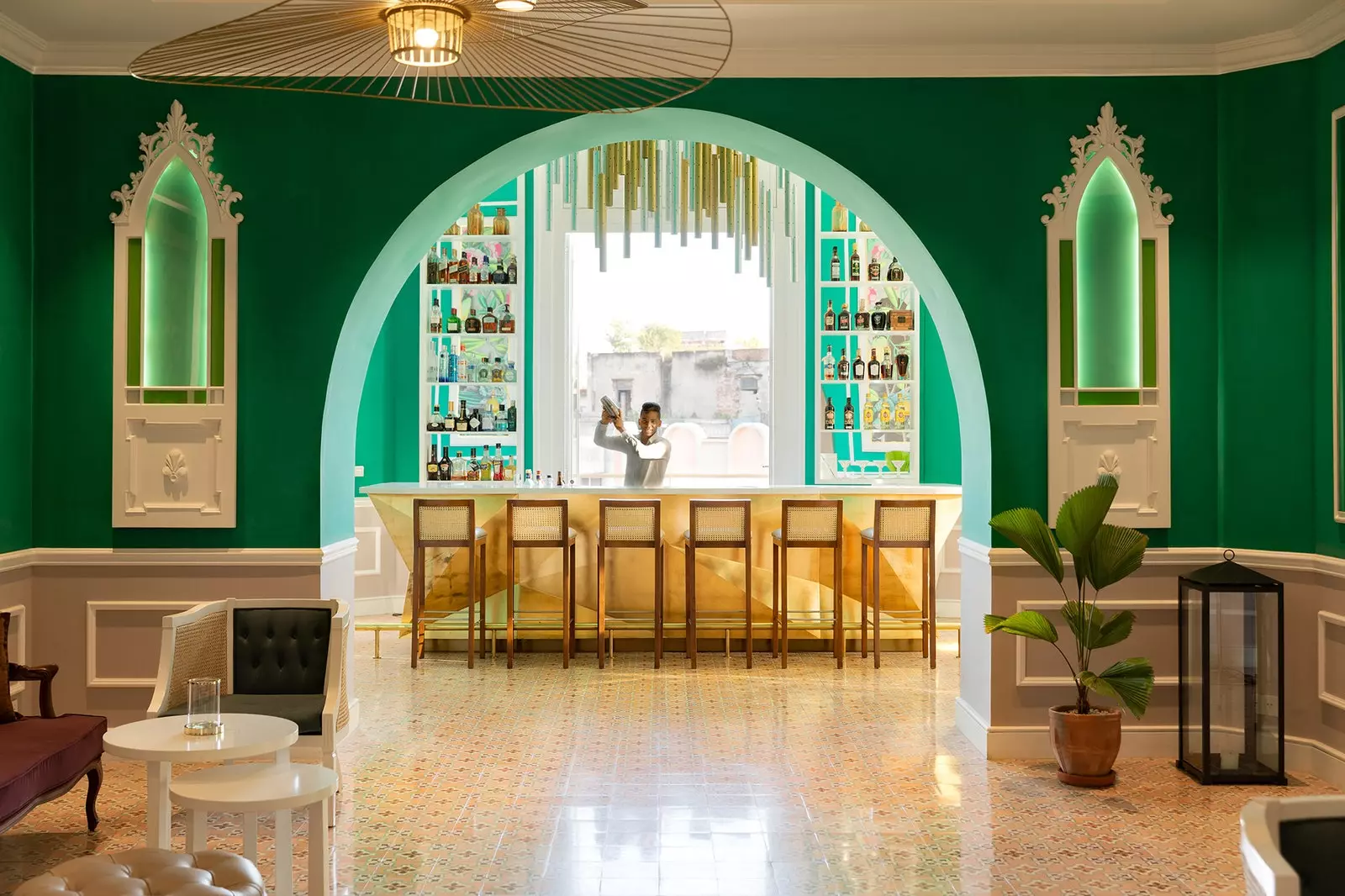
Constant Bar, Kempinski Big Apple Hotel
On the border between Old Havana and Central Havana is the Paseo del Prado. On this boulevard with a Spanish aftertaste and with the Caribbean in the background, is the Iberostar Grand Packard , the Packard for everyone . This hotel was already a hotel in the 30s and everyone who passed through the city stayed there, among them a certain Marlon Brando . Last year the hotel reopened transformed into a grand hotel (in size and ambition). It is a haven of peace in the middle of a very intense city.
It is comfortable, bright and has stunning views of half of Havana. Its terrace is interesting because it not only welcomes tourists and expatriates (many Spaniards, by the way), but also the Cuban upper middle class (there are some) who come to Have a daiquiri looking at the Morro. The pool is not only a rarity because it is large and modern, it is also a gift in a city where it is very, very hot.
Sleeping in this hotel also places us on the edge of the Malecón , which we will have to go through to fully understand the rhythms of the city and without people. And no, we won't be able to swim in the sea: for that we have to travel half an hour. We won't miss it: Havana abducts to such an extent that nobody misses a dip. That's how powerful it is.
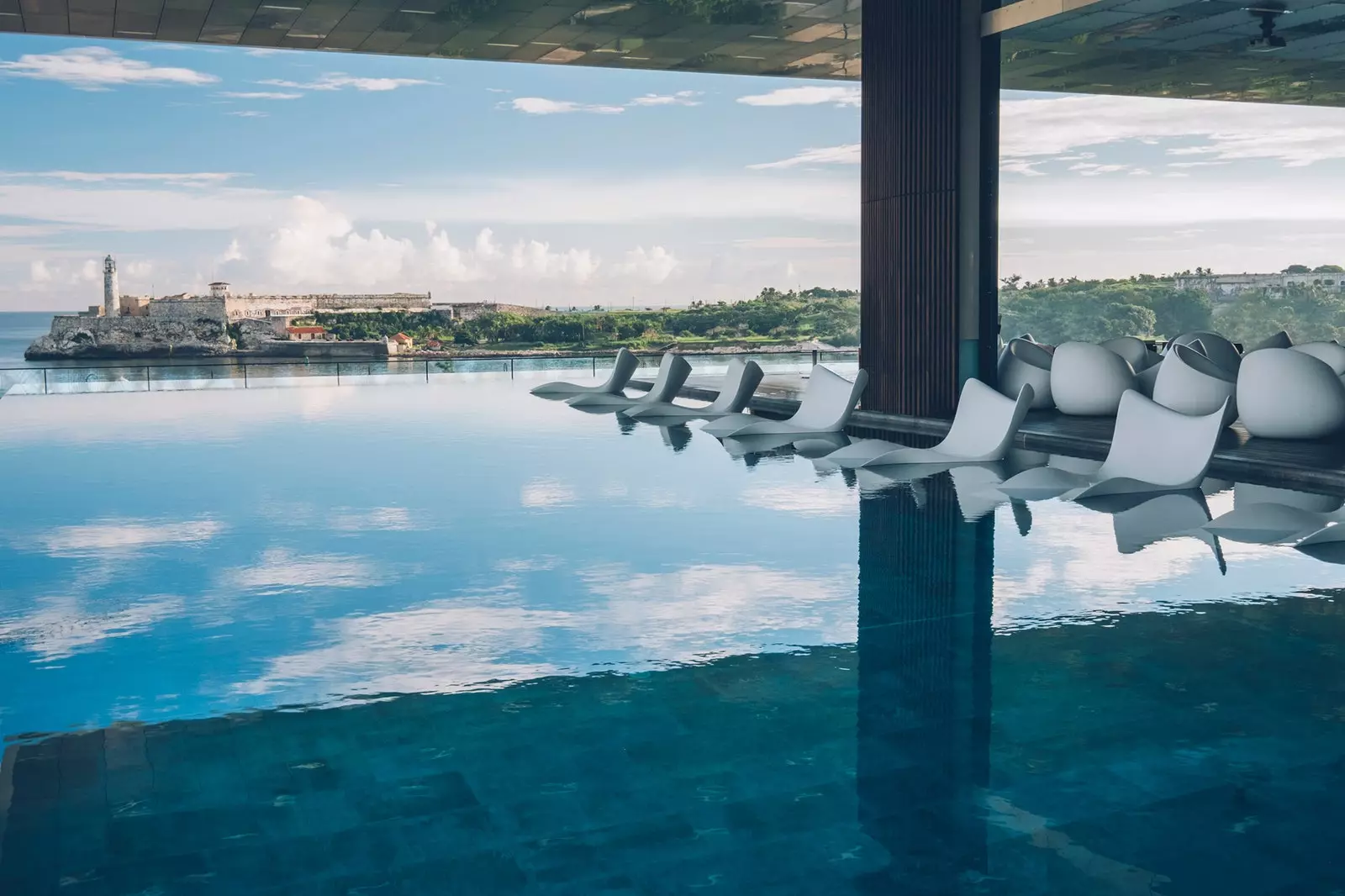
To sleep in this hotel is to do it, almost, on the Malecón
Old Havana has the charm and luster of the Spanish past, but Centro Habana is the most intense neighborhood and the one that best corresponds to the image we have in mind. It is that place that we see with the houses in ruins, with the remains of the majestic past.
Antonio José Ponte, in his book La Fiesta Vigilada, key to understanding Havana today, he writes about the martyred beauty of Havana and of the "miraculous static" of their houses , which defy the most elementary physical laws.
He writes that "every ruinologist practices a crossed contemplation of reproaches". This neighborhood is a playground for ruinologists. There they are the palates that everyone talks about like San Cristóbal and La Guarida.
There are films that are linked to their cities and Strawberry and Chocolate is one of her. The film by Tomás Gutiérrez Alea and Juan Carlos Tabío modified part of the story of the city and continues to be present in conversations today. “Welcome to La Guarida”, said the protagonist. Today his staircase is a photocall; a beautiful photocall.
Centro Habana is also a mecca for architecture fetishists, like the entire city. The America Theater is an untouched Art Deco gem. It opened in 1941 and included an apartment building, a theater, a cinema, and a café. If we stop in his street we will see how the Chevrolets pass in front of him and we seem to be on a movie set.
That retro-sensation is permanent in Havana. There are some spaces that remind us of the year we are in, some timid exercises to escape from that nostalgia. Are stores like Clandestina or Malecón 663, where we find contemporary design and local products wanting to get rid of the past.
In Central Havana, Bordering Chinatown is the Galleria Continua. An old cinema from the 50s, golden eagle , welcomes an unexpected artistic proposal. This gallery, based in San Gimignano, Moulins and Beijing, opened in 2015 in a country where buying art is not common; this space works as a meeting place between Cubans and international artists such as Anish Kapoor or Daniel Buren. Welcome at the entrance a mural by Agnes Varda . Havana is also this.
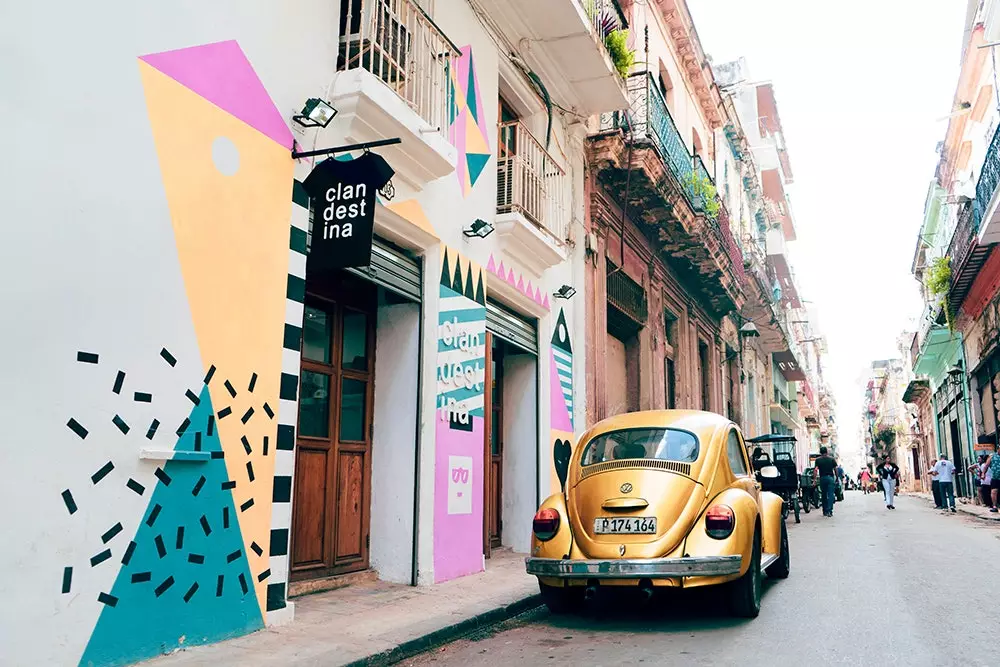
Many spaces try to escape the nostalgia of past times
Cinemas are common in a city where culture is abundant, vivid and very affordable for the local. The Vedado area concentrates cinemas that seem to be taken from an architecture book from the 50s. Places like the Yara, the Acapulco, the Rampa or 23 and 12 They are still active and recall a time when Havana was the city with the most cinemas in America.
This neighborhood is an absolute paradise for architecture lovers and fundamental in a first (and a second and a third), visit to Havana. There is the National , one of those hotels that are, like La Mamounia in Marrakech or Raffles in Singapore, much more than hotels: they are part of the culture and history of the city.
On a first visit, we will feel like getting into a bright-colored classic convertible and touring the city. It's not so terrible: It is a good way to see remote neighborhoods in a short time, such as Miramar or Siboney or to get closer to the Plaza de la Revolución , where there is an overdose of revolutionary symbols and where it is difficult not to take a hundred photos. What's more, there are even influencers posing on top of the Chevrolets.
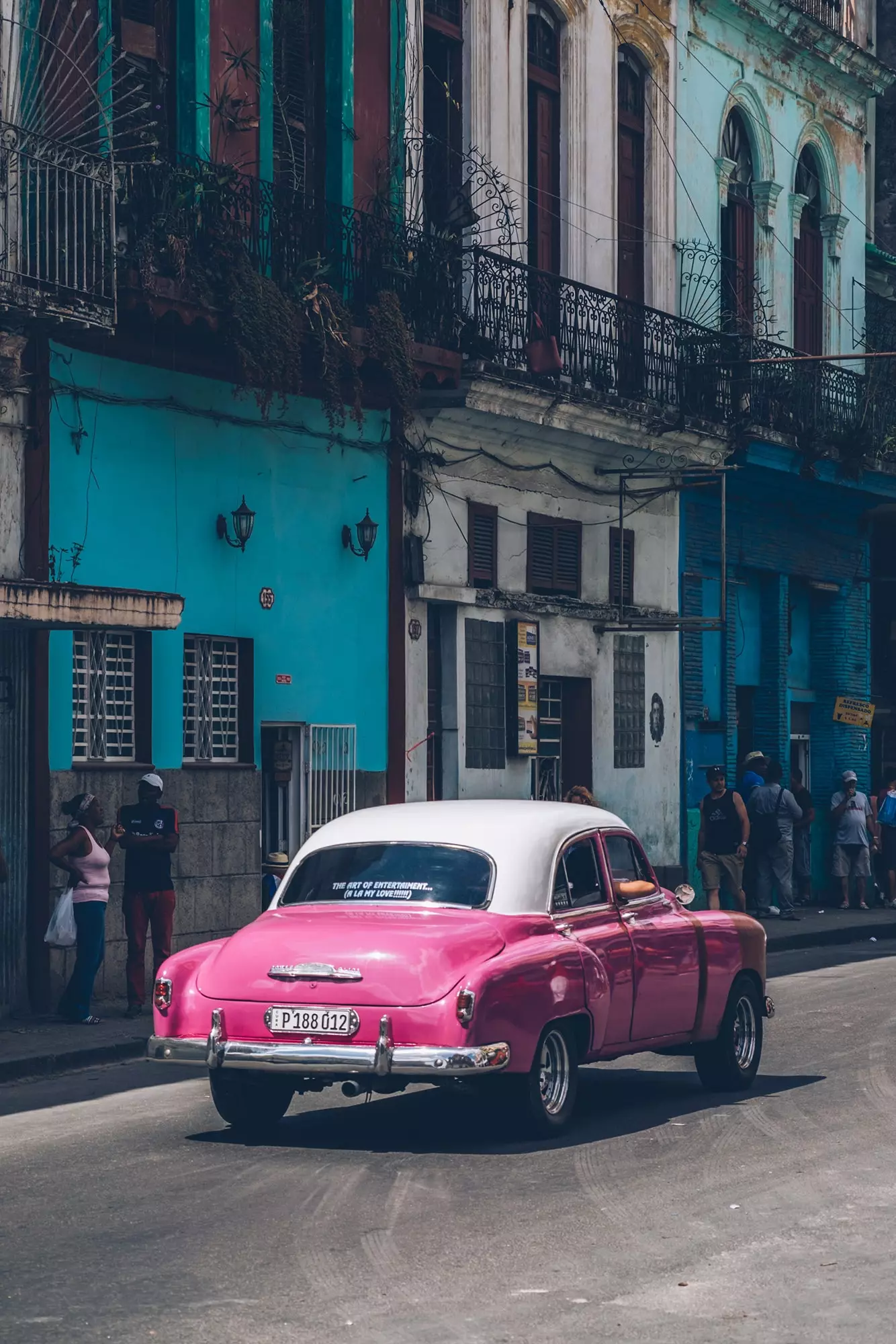
Impossible not to think that we are inside a movie with this picture
Let's continue in Vedado. There is Coppelia ice cream parlor where we will go on our Havana debut. Beyond appearing in the ineffable Strawberry and Chocolate , it is an architectural gem from 1966 and one of those places that give you clues about what Havana is , with its differences between tourists and locals and the simplicity, not simplicity, of its leisure.
In Vedado not everything is nostalgia; there arise places attached to the present, such as the Eclectic Italian restaurant. Here he cooks the pasta by hand and listens to live music at night. This is nothing strange: in Havana, music occupies everything. As much as they have warned you that it happens until you check it, you do not believe it.
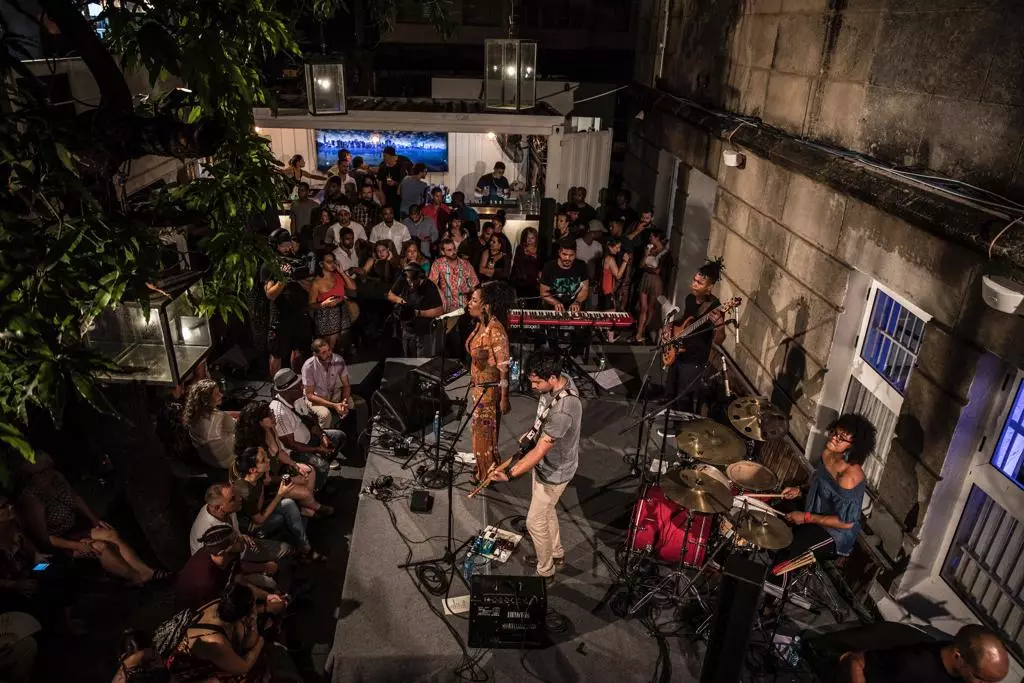
In Havana, music invades everything
Music is at the center of The Cuban Art Factory (FAC). We are not here to force anything, but this place must be visited. It's the best plan for the night and everyone says "how nice" when you say you plan to go. It is a nightlife complex that unites music, art and restaurants and that Time magazine has chosen as one of the 100 best places in the world.
The FAC looks like just another cultural space: it is not. To begin with because it is unique in Cuba and fills up every night Thursday to Sunday and from 8 to 4 in the morning. to follow by its top-level concert proposal and because the exhibition halls are full at midnight.
Your Head of Communication and Artistic Coordination, Ivan Vergara account: “Nobody in the world who works with art does it the way we project it. We work at night and give leisure options”. The FAC opens three months and closes one. Let's plan to go to Havana when it's open.
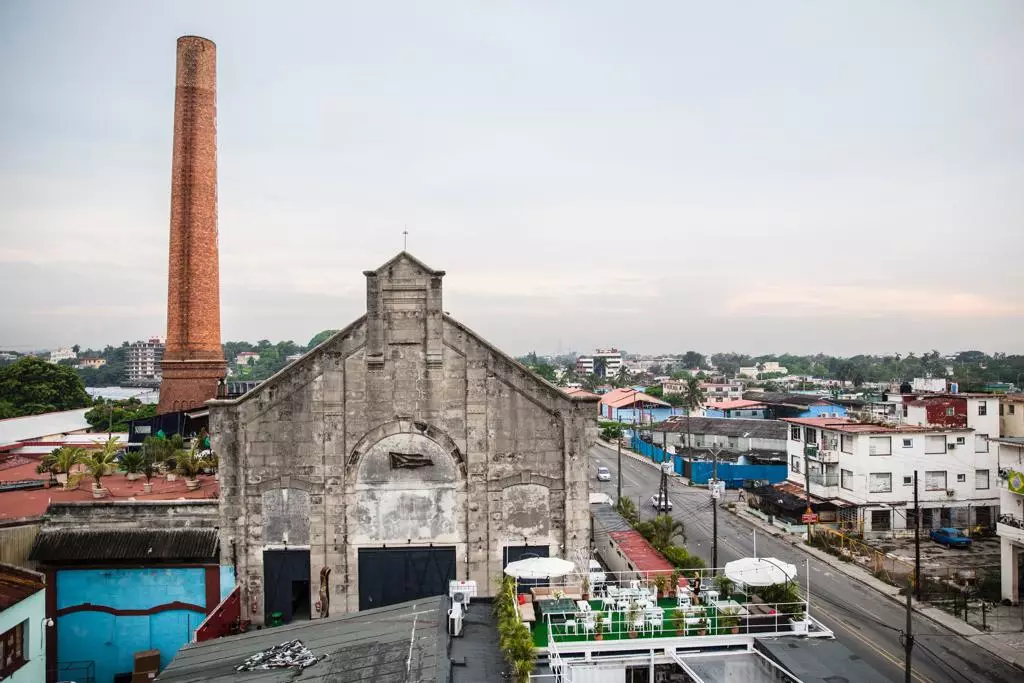
The Cuban Art Factory (FAC)
On a first trip we will also **go up to the terrace of the Saratoga** to bask in the fabulous light of Havana; also we will eat old clothes in any palate , we will read all the posters that we find in the streets (“No one gives up here”) and We will chat with locals and strangers.
We travel to return different from how we left home and Havana returns to you like this. It is difficult to understand her and easy to be seduced by her. It is a great city, one of the great in the world. And, as Ponte writes of her: “You were never alone in the city. Ruinous as it was." For this reason, the way back to the airport is made in silence between palm trees and hitchhikers.
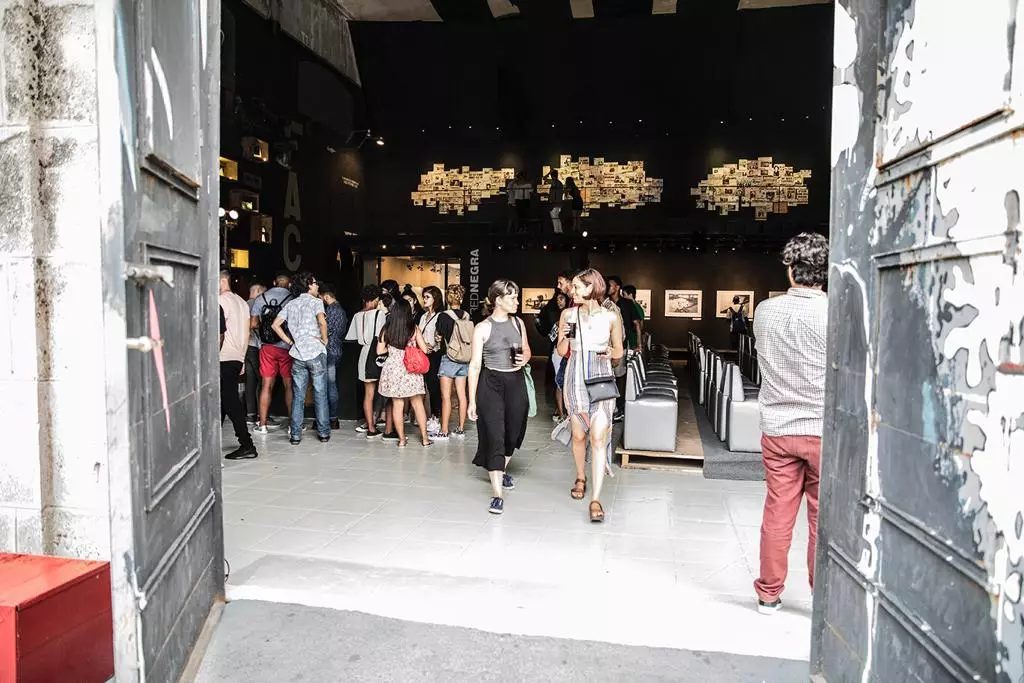
The Cuban Art Factory (FAC)
